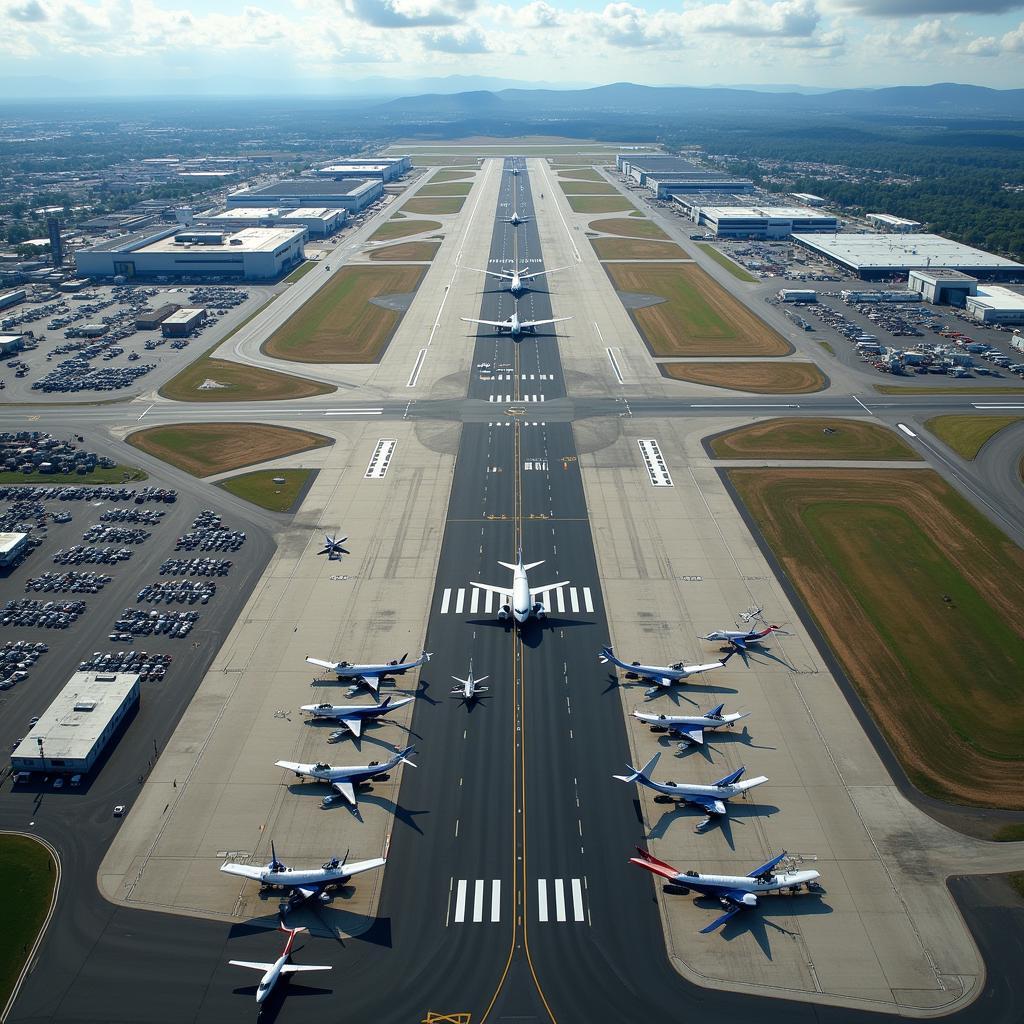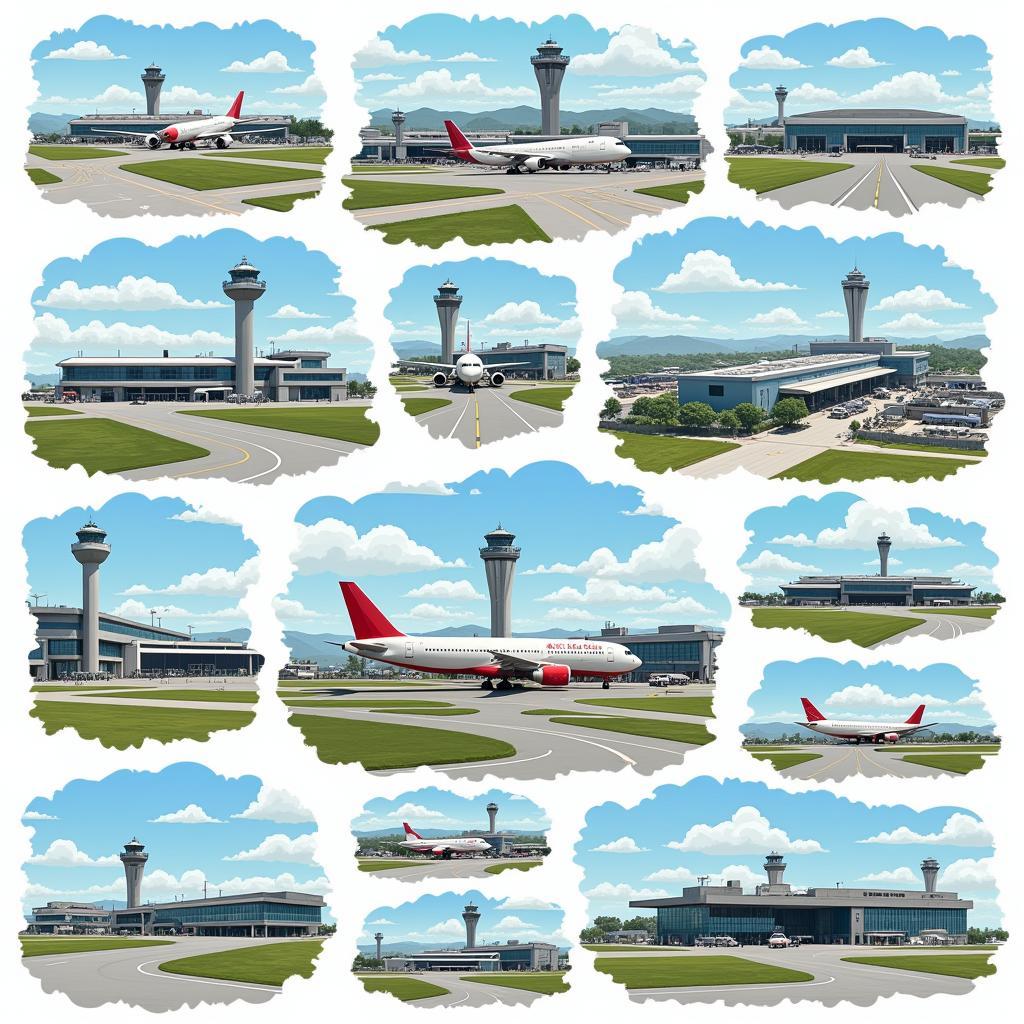An airport is a complex and vital hub of activity, connecting people and goods across the globe. It’s much more than just runways and terminals; it’s a carefully orchestrated system designed to facilitate safe and efficient air travel. This article will delve into the Airport Definition, exploring its various components, functions, and significance in the modern world.
Understanding the Airport Definition
At its core, an airport is a designated area of land or water intended for the landing, takeoff, and ground movement of aircraft. This includes not only the physical infrastructure like runways and taxiways but also the buildings and facilities necessary for passenger handling, cargo operations, and aircraft maintenance. From small regional airfields to sprawling international hubs, each airport plays a crucial role in the global transportation network. Similar to an airport hotel definition, the definition of an airport encompasses a range of facilities beyond its primary function.
Key Components of an Airport
A modern airport comprises various interconnected components working in harmony. These include:
- Runways: These are specifically prepared surfaces designed for aircraft to land and take off. Their length and construction vary based on the types of aircraft they are intended to accommodate.
- Taxiways: These connect runways to aprons, hangars, and terminals, allowing aircraft to move safely on the ground.
- Aprons: Also known as ramps, these are designated areas where aircraft park for loading and unloading passengers, baggage, and cargo.
- Terminals: These are buildings where passengers check in, go through security, and wait for their flights. They house various amenities such as restaurants, shops, and waiting areas.
- Control Tower: This is the nerve center of the airport, where air traffic controllers manage aircraft movements on the ground and in the air, ensuring safety and efficiency.
- Hangars: These large structures are used for aircraft storage, maintenance, and repair.
 Airport Components: Runways, Taxiways, and Terminals
Airport Components: Runways, Taxiways, and Terminals
What is the Purpose of an Airport?
Airports serve as critical gateways for both domestic and international travel. They facilitate the movement of people and goods, connecting businesses, cultures, and communities worldwide. Beyond their primary function of enabling air travel, airports also contribute to local economies by creating jobs and generating revenue. They serve as hubs for trade and tourism, driving economic growth and development. Think of the 13 airports as key players in fostering global connectivity.
Different Types of Airports
Airports are categorized based on their size, function, and the types of aircraft they handle. Some common classifications include:
- International Airports: These cater to international flights and typically have customs and immigration facilities.
- Domestic Airports: These primarily handle flights within a country.
- Regional Airports: These serve smaller communities and often connect to larger hubs.
- Cargo Airports: These specialize in handling air freight and cargo operations.
 Different Airport Types: International, Domestic, and Regional
Different Airport Types: International, Domestic, and Regional
The Future of Airports
The aviation industry is constantly evolving, and airports are adapting to meet the demands of the future. This includes incorporating sustainable practices, implementing advanced technologies, and enhancing the passenger experience. From biometric screening to automated baggage handling, innovation is transforming the way we travel. Understanding the india me sabse bada airport kaha hai is important for understanding the scale of these advancements.
Conclusion
The airport definition extends far beyond simply being a place where planes land and take off. It encompasses a complex ecosystem of infrastructure, technology, and human resources, all working together to connect the world. As air travel continues to grow, airports will continue to play a vital role in shaping the future of global transportation. Knowing the nearest airport to wayanad can significantly impact travel plans. The continued evolution of airports promises even more efficient and seamless travel experiences in the years to come.
 Airport Innovation: Shaping the Future of Air Travel
Airport Innovation: Shaping the Future of Air Travel
Quote from John Smith, Aviation Consultant: “Airports are not just transportation hubs; they are economic engines driving growth and connecting communities around the world.”
Quote from Jane Doe, Airport Operations Manager: “The future of airports lies in embracing sustainability and leveraging technology to create a seamless and efficient passenger experience.”
FAQ
- What is the basic function of an airport? To facilitate the landing, takeoff, and ground movement of aircraft.
- What are the main parts of an airport? Runways, taxiways, aprons, terminals, control tower, and hangars.
- What are the different types of airports? International, domestic, regional, and cargo airports.
- How do airports contribute to the economy? By creating jobs, generating revenue, and serving as hubs for trade and tourism.
- What are some of the future trends in airport development? Sustainable practices, advanced technologies, and enhanced passenger experience.
- Where can I find stunning airport background images? Check out our dedicated page.
- What are some key considerations for airport design? Safety, efficiency, passenger flow, and environmental impact.
For further assistance, please contact us at Phone: +13089626264, Email: [email protected], or visit our office at 404 Bothwell St, Oxford, NE 68967, USA. Our customer service team is available 24/7.

